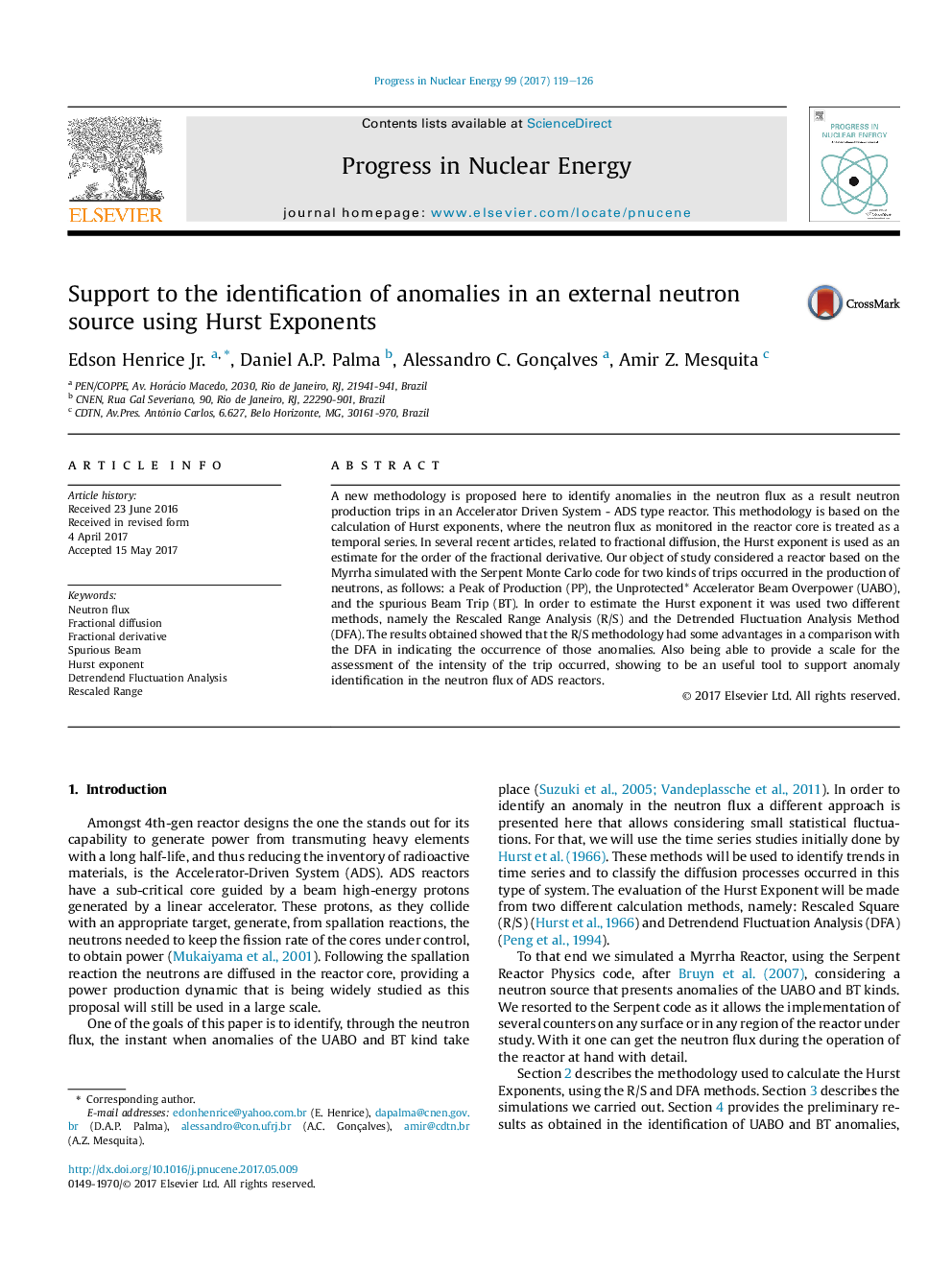| Article ID | Journal | Published Year | Pages | File Type |
|---|---|---|---|---|
| 5478030 | Progress in Nuclear Energy | 2017 | 8 Pages |
Abstract
A new methodology is proposed here to identify anomalies in the neutron flux as a result neutron production trips in an Accelerator Driven System - ADS type reactor. This methodology is based on the calculation of Hurst exponents, where the neutron flux as monitored in the reactor core is treated as a temporal series. In several recent articles, related to fractional diffusion, the Hurst exponent is used as an estimate for the order of the fractional derivative. Our object of study considered a reactor based on the Myrrha simulated with the Serpent Monte Carlo code for two kinds of trips occurred in the production of neutrons, as follows: a Peak of Production (PP), the Unprotected* Accelerator Beam Overpower (UABO), and the spurious Beam Trip (BT). In order to estimate the Hurst exponent it was used two different methods, namely the Rescaled Range Analysis (R/S) and the Detrended Fluctuation Analysis Method (DFA). The results obtained showed that the R/S methodology had some advantages in a comparison with the DFA in indicating the occurrence of those anomalies. Also being able to provide a scale for the assessment of the intensity of the trip occurred, showing to be an useful tool to support anomaly identification in the neutron flux of ADS reactors.
Related Topics
Physical Sciences and Engineering
Energy
Energy Engineering and Power Technology
Authors
Edson Jr., Daniel A.P. Palma, Alessandro C. Gonçalves, Amir Z. Mesquita,
